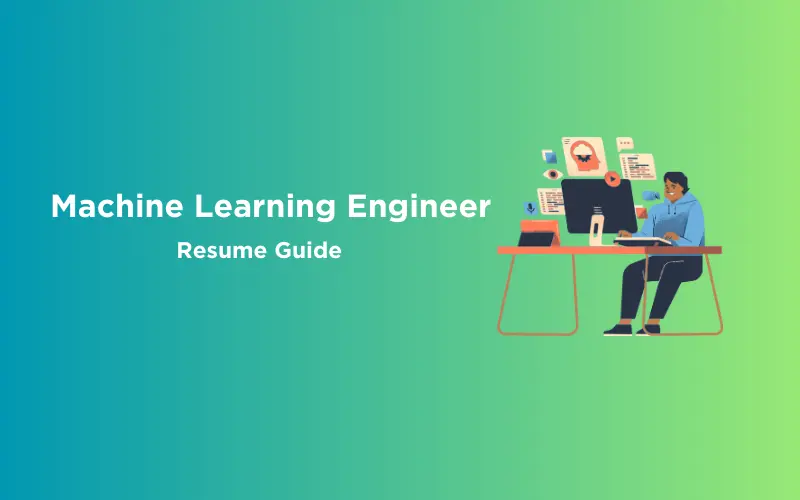
Machine Learning Engineer Resume Guide: 11 Important Things To Include!
Oct 22, 2024 3 Min Read 3030 Views
(Last Updated)
The current technological era is full of competition and those who have profound skillset are the ones who can win the race. As the future is moving towards Artificial Intelligence and Machine Learning, and if you are in that field, securing a job is highly difficult but if you have the right machine learning engineer resume, it would be a piece of cake.
A resume is the index of your skills and it is important for you to build it in the right way possible. For a machine learning engineer resume, there are certain things that you have to keep in mind before building it.
In this article, you will learn about those things that can help your machine learning engineer resume stand out from the crowd. So, without further ado, let’s get started.
Table of contents
- Building a Professional Machine Learning Engineer Resume
- Contact Information
- Summary or Objective
- Skills Section
- Educational Background
- Relevant Projects
- Professional Experience
- Research Experience (if any)
- Certifications
- Awards and Honors
- GitHub or Portfolio Link
- Publications and Presentations
- Example of a Professional Machine Learning Engineer Resume
- Conclusion
- FAQ
- What should be the key focus when building a machine learning engineer resume?
- Should I include non-machine learning work experience on my resume?
- How can I tailor my resume to a specific machine-learning job posting?
- How should I address employment gaps on my machine learning engineer resume?
Building a Professional Machine Learning Engineer Resume
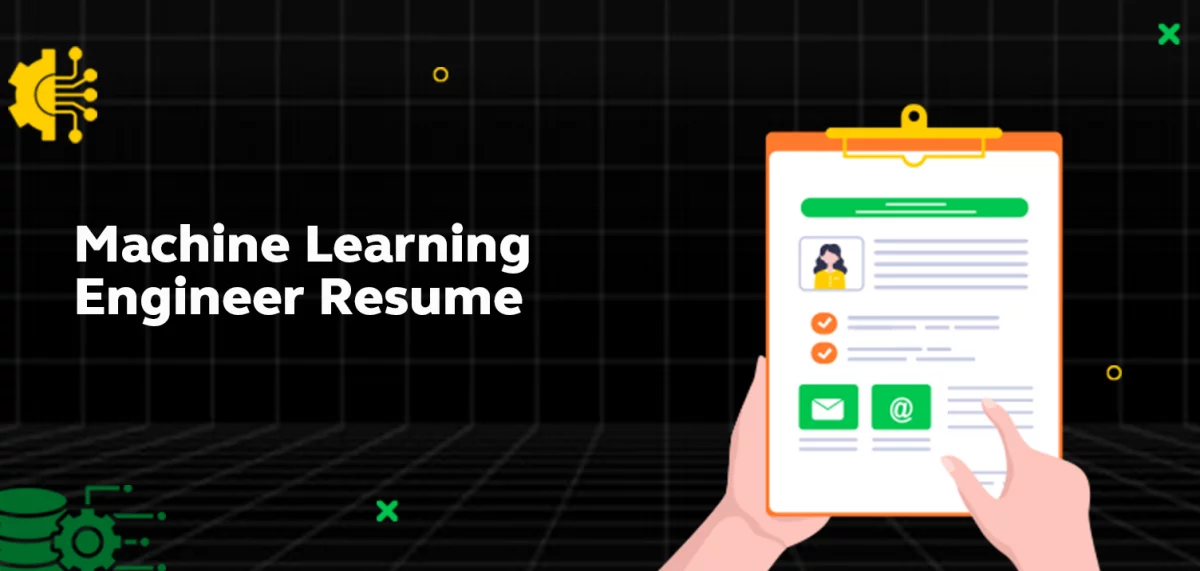
Machine Learning will definitely be one of the technological fields to dominate this world and the future of ML is as bright as ever. Building a machine learning engineer resume requires careful attention to detail, clearly presenting your skills and experiences.
Make sure you understand machine learning fundamentals like Python, SQL, deep learning, data cleaning, and cloud services before we explore them in the next section. You should consider joining GUVI’s Artificial Intelligence & Machine Learning Course, which covers tools like Pyspark API, Natural Language Processing, and many more and helps you get hands-on experience by building real-time projects.
Also, if you want to explore Artificial Intelligence and Machine Learning through a Self-paced course, try GUVI’s Artificial Intelligence Course.
Here’s a comprehensive guide on what to include in your machine learning engineer resume:
1. Contact Information
At the top of your resume, include your full name, phone number, email address, and LinkedIn profile. Make sure your contact information is up-to-date and professional as the recruiter will use this to contact you. If it is not up-to-date or not professional, it will leave a bad impression on you.
2. Summary or Objective
A summary or an objective is the introductory part of a machine learning engineer resume and it is the first impression of yourself. So, begin with a brief summary or objective statement highlighting your machine learning expertise. Mention your key skills, relevant experience, and career goals. This section should grab the recruiter’s attention and give them a quick overview of your profile.
3. Skills Section
Create a dedicated section listing the technical skills that are required for machine learning. Include hard skills like programming languages (Python, R, etc.), and machine learning frameworks (TensorFlow, PyTorch), and soft skills such as problem-solving, critical thinking, and communication. Tailor this section to align with the specific job requirements.
4. Educational Background
Provide details about your academic background, including the names of the institutions, degrees earned, and graduation dates. If you have a relevant thesis or coursework related to machine learning, highlight it as well.
5. Relevant Projects
Showcase your practical experience through a detailed projects section. Highlight projects that demonstrate your understanding of machine learning concepts, algorithms, and real-world applications. Include project titles, descriptions, your role, tools used, and outcomes.
6. Professional Experience
Detail your work experience, emphasizing roles and responsibilities related to machine learning. Use action verbs to describe your accomplishments and quantify results where possible. Mention any impact you had on the business or projects you contributed to.
Make sure to write this in reverse chronological order having your recent job post at first. This helps the recruiter to scan through your work experience easily without much difficulty.
7. Research Experience (if any)
If you have been involved in any machine learning research during your college days or during your work time, create a separate section and include a detailed analysis of your research projects. Highlight publications, conferences attended, and any contributions to the field.
8. Certifications
It is not only important but mandatory for all machine learning engineers to have a professionally certified machine learning course that is offered by any prestigious institution such as GUVI. This can include machine learning courses, online certifications, or professional certificates from recognized organizations. This is the key factor that can make your resume look strong and increase your likeliness of getting selected for the job role.
9. Awards and Honors
If you have received any awards or honors related to machine learning, include them in a separate section. This could include hackathon wins, recognition for outstanding projects, or academic achievements.
10. GitHub or Portfolio Link
Provide a link to your GitHub profile or an online portfolio where recruiters can review your code and projects in more detail. Ensure that your projects are well-documented and organized.
11. Publications and Presentations
If you have authored any papers, or articles, or given presentations related to machine learning, include a section highlighting these contributions. Provide details on the titles, venues, and dates.
Remember to tailor your machine learning resume for each job application by emphasizing the skills and experiences most relevant to the specific role. Keep the content concise, use clear language, and focus on demonstrating your ability to contribute to the prospective employer’s needs in the machine learning domain.
Example of a Professional Machine Learning Engineer Resume
Now that you have understood the contents that need to be there, it is time for you to see a professional machine learning engineer’s resume to understand the nuances and details that it holds. Here is one such type of machine learning engineer resume:
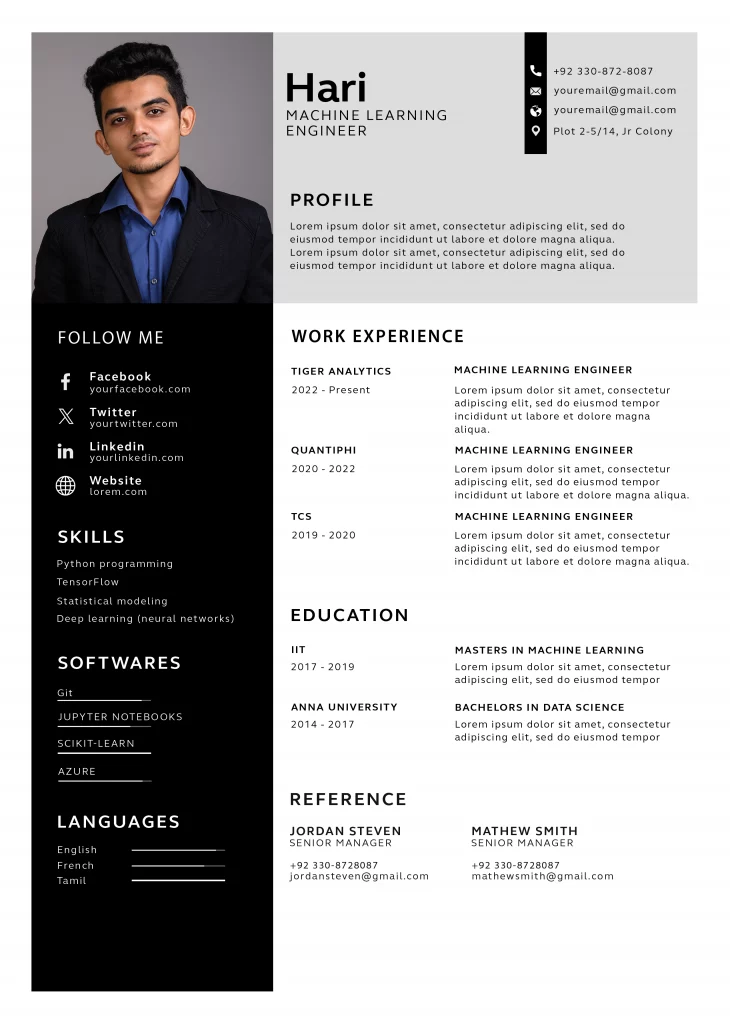
Kickstart your Machine Learning journey by enrolling in GUVI’s Artificial Intelligence & Machine Learning Course where you will master technologies like matplotlib, pandas, SQL, NLP, and deep learning, and build interesting real-life machine learning projects.
Alternatively, if you want to explore Artificial Intelligence and Machine Learning through a Self-paced course, try GUVI’s Artificial Intelligence Course.
Conclusion
In conclusion, building a compelling machine learning engineer resume is essential in navigating the dynamic and competitive field of machine learning. A well-structured resume serves as a gateway to showcasing one’s skills, experiences, and expertise in machine learning.
By following the guidelines presented in this guide, you as an aspiring machine learning engineer can effectively highlight your accomplishments, technical proficiency, and problem-solving abilities.
As machine learning continues to shape the future of technology, a resume that reflects a deep understanding of AI concepts and practical applications will undoubtedly stand out, paving the way for a successful career in this exciting and transformative field.
Also Read: Top 5 Product-Based Companies for Machine Learning Engineers
FAQ
Your resume should emphasize a combination of technical skills, relevant projects, and quantifiable achievements, showcasing your ability to apply machine learning concepts in practical scenarios.
Yes, include non-machine learning work experience, especially if it demonstrates transferable skills like problem-solving, teamwork, or project management.
Customize your resume by aligning your skills and experiences with the specific requirements of the job. Use keywords from the job description to demonstrate relevance.
Be honest and transparent about employment gaps. If possible, use this space to highlight any relevant skills or learning experiences during that time.





















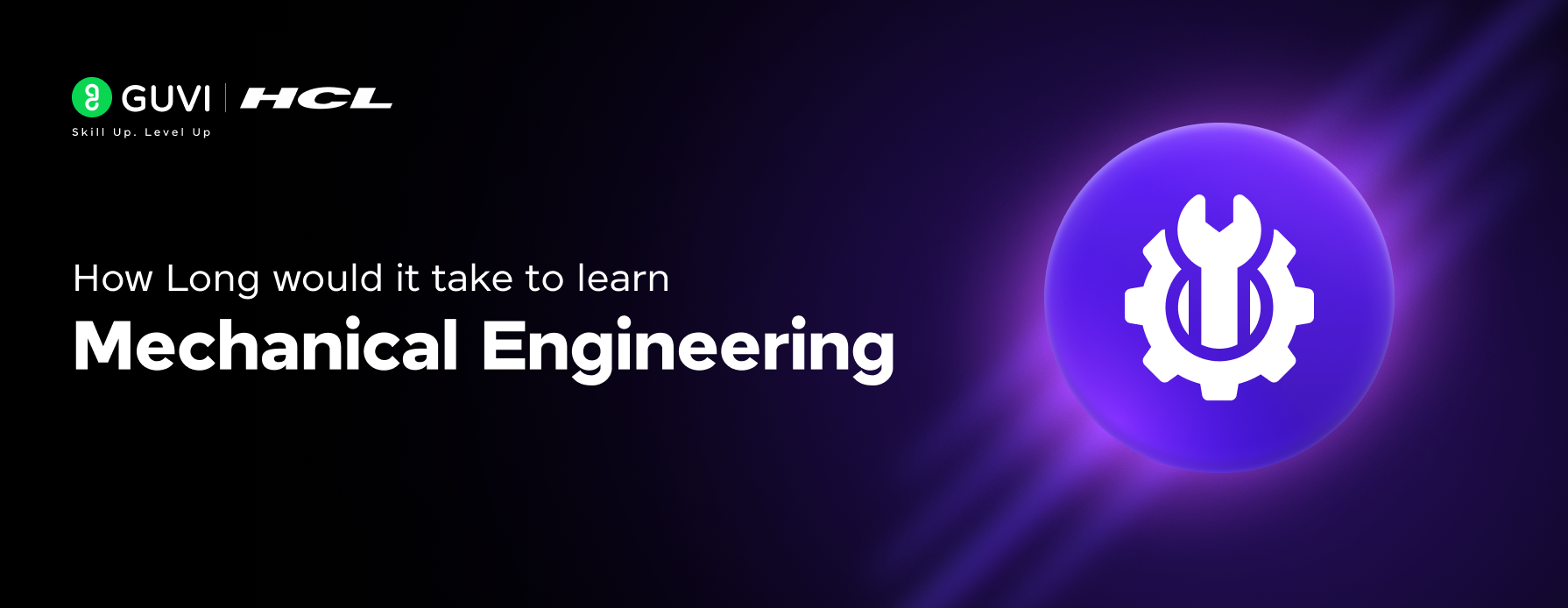


![Top 5 Tech Careers of the Future [2025] 7 tech careers](https://www.guvi.in/blog/wp-content/uploads/2023/01/Top-Tech-Careers-Of-The-Future.webp)


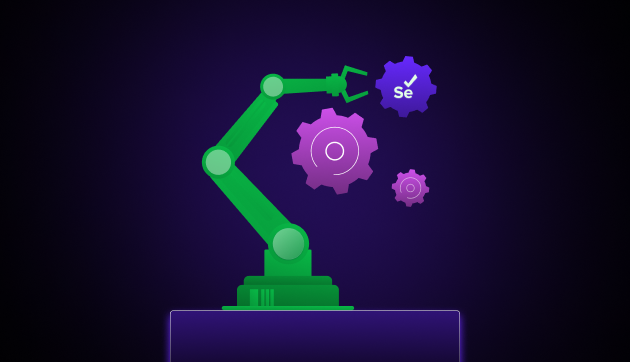



Did you enjoy this article?